Gyeongju Tourism offers a captivating journey through South Korea’s rich history and cultural heritage. SIXT.VN provides comprehensive travel solutions to make your trip seamless, from convenient airport transfers to comfortable hotel bookings. Discover ancient temples, royal tombs, and stunning landscapes, all while enjoying the ease and reliability of SIXT.VN services. With our expertly curated travel packages, you can immerse yourself in the beauty and history of this remarkable destination, exploring iconic sites and hidden gems.
1. What is Gyeongju Known For in Terms of Tourism?
Gyeongju, often called the “museum without walls,” is famous for its historical significance as the ancient capital of the Silla Kingdom (57 BC – 935 AD). This city is renowned for its numerous UNESCO World Heritage sites, including Bulguksa Temple, Seokguram Grotto, and the Daereungwon Tomb Complex. According to UNESCO, these sites showcase outstanding examples of Buddhist art and architecture from the Silla period. Gyeongju offers a unique blend of historical sites, cultural experiences, and natural beauty.
1.1 What specific historical sites make Gyeongju a unique tourist destination?
Gyeongju’s historical sites are a testament to its rich past. Bulguksa Temple, founded in the 6th century and rebuilt in the 8th century, is a prime example of Buddhist architecture. Seokguram Grotto houses a magnificent seated Buddha statue overlooking the sea. The Daereungwon Tomb Complex features large burial mounds of Silla royalty. Cheomseongdae Observatory, built in the 7th century, is one of the oldest astronomical observatories in East Asia. These sites provide tangible connections to Korea’s ancient history and culture.
1.2 How do the cultural experiences in Gyeongju enhance the tourism appeal?
Cultural experiences in Gyeongju enrich the tourism appeal by offering visitors a chance to immerse themselves in Korean traditions. The Gyochon Traditional Village showcases historic homes and traditional crafts, providing a glimpse into the lifestyle of the Joseon Dynasty. Visitors can participate in tea ceremonies, learn calligraphy, and sample local cuisine. Festivals and events, such as the Silla Cultural Festival, celebrate Gyeongju’s heritage with parades, performances, and traditional games. These cultural experiences provide a deeper understanding and appreciation of Gyeongju’s unique identity.
1.3 What natural beauty can tourists expect to find in Gyeongju?
The natural beauty of Gyeongju complements its historical and cultural attractions. Namsan Mountain, a sacred peak dotted with temples and Buddhist sculptures, offers hiking trails with stunning views. Bomun Lake provides a serene setting for relaxation and recreation, with parks, gardens, and walking paths surrounding the water. In the spring, cherry blossoms blanket the city, creating picturesque landscapes. These natural elements enhance Gyeongju’s appeal as a well-rounded tourist destination.
 Namsan Mountain, Gyeongju, Korea
Namsan Mountain, Gyeongju, Korea
2. What are the Must-See Historical Sites for Gyeongju Tourism?
For Gyeongju tourism, the must-see historical sites include Bulguksa Temple, Seokguram Grotto, Daereungwon Tomb Complex, Cheomseongdae Observatory, and Donggung Palace with Wolji Pond. These locations offer deep insights into the Silla Dynasty and its cultural achievements. SIXT.VN simplifies your exploration with convenient transportation options and expertly planned itineraries, ensuring you experience the best of Gyeongju.
2.1 Can you describe Bulguksa Temple and its significance in Gyeongju?
Bulguksa Temple is a UNESCO World Heritage site and one of the most significant Buddhist temples in Korea. Founded in the 6th century and rebuilt in the 8th century, it showcases exquisite architecture and intricate craftsmanship. The temple complex includes several National Treasures, such as the Dabotap and Seokgatap pagodas. Bulguksa serves as a testament to the advanced engineering and artistic skills of the Silla Dynasty. According to the Cultural Heritage Administration of Korea, the temple embodies the essence of Buddhist ideals and artistic expression.
2.2 What makes Seokguram Grotto a key attraction for tourists?
Seokguram Grotto, located on the slopes of Tohamsan Mountain, is a UNESCO World Heritage site renowned for its magnificent Buddha statue. Carved from granite in the 8th century, the statue is a masterpiece of Buddhist sculpture. The grotto’s design incorporates advanced architectural principles, allowing natural light to illuminate the Buddha’s face during sunrise. The serene atmosphere and spiritual significance of Seokguram Grotto make it a key attraction for tourists seeking cultural and historical experiences.
2.3 What should tourists know about the Daereungwon Tomb Complex?
The Daereungwon Tomb Complex is a cluster of royal tombs from the Silla Dynasty, offering a unique glimpse into ancient burial practices. The complex features large grassy mounds, some of which have been excavated. Cheonmachong (Sky Horse Tomb) is open to the public, allowing visitors to view artifacts discovered inside, including a painting of a flying horse. The tombs provide insight into the power and wealth of the Silla rulers. Visitors should be respectful and follow guidelines to preserve this important historical site.
2.4 What is the historical importance of Cheomseongdae Observatory?
Cheomseongdae Observatory is one of the oldest astronomical observatories in East Asia, dating back to the 7th century during the reign of Queen Seondeok. The structure was used for observing the stars and predicting celestial events, reflecting the Silla Kingdom’s advanced knowledge of astronomy. Built with 365 stones, representing the days of the year, Cheomseongdae stands as a symbol of scientific innovation in ancient Korea. Tourists can admire its unique design and learn about its role in Silla’s history.
2.5 How does Donggung Palace and Wolji Pond contribute to Gyeongju’s historical appeal?
Donggung Palace and Wolji Pond, also known as Anapji Pond, offer a glimpse into the royal life of the Silla Dynasty. The palace was used as a secondary residence for the crown prince, and the pond served as a scenic retreat for royal gatherings. Constructed in the 7th century, Wolji Pond features artificial islands and meticulously landscaped gardens. At night, the pond is illuminated, creating a magical atmosphere that transports visitors back in time. Donggung Palace and Wolji Pond enhance Gyeongju’s historical appeal by showcasing the opulence and artistic refinement of the Silla court.
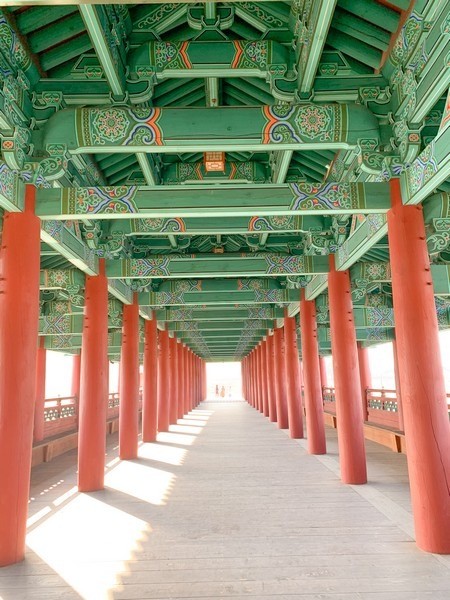 Donggung Palace & Wolji Pond (동궁과 월지)
Donggung Palace & Wolji Pond (동궁과 월지)
3. What Are Some Unique Cultural Experiences in Gyeongju Tourism?
Gyeongju tourism offers unique cultural experiences such as exploring Gyochon Traditional Village, trying Gyeongju Bread, and sampling Beopju rice wine. These activities provide insights into local traditions and culinary delights. SIXT.VN enhances your cultural immersion with tailored tours and convenient travel options, making your exploration of Gyeongju unforgettable.
3.1 What can tourists experience at Gyochon Traditional Village?
Gyochon Traditional Village offers tourists a glimpse into the lifestyle of a historic Korean village. Visitors can explore traditional Hanok houses, some of which are centuries old. The village is known for the Choe Clan, a wealthy family that has resided there for over 400 years. Tourists can participate in cultural activities such as making traditional crafts, learning about Korean etiquette, and sampling local cuisine. The serene atmosphere and preserved architecture make Gyochon Traditional Village a unique cultural experience.
3.2 What is Gyeongju Bread, and why is it a local specialty?
Gyeongju Bread, also known as Hwangnam Bread, is a small pastry filled with sweet red bean paste, recognized by the chrysanthemum imprinted on its top. First baked in 1939, it has become a local specialty representing Gyeongju’s culinary heritage. The Gyeongju government has designated it as an “outstanding regional specialty.” Tourists enjoy Gyeongju Bread as a tasty treat and a symbol of the city’s identity.
3.3 What is Beopju, and where can tourists sample it?
Beopju is a traditional Korean rice wine (cheongju) renowned for its clear and refined taste. It is made by the head house of the Gyerim Choe Clan, who reside in Gyeongju. The recipe dates back to a Joseon official who passed it down through generations. Tourists can sample Beopju at local restaurants and specialty shops in Gyeongju. The wine offers a unique taste of Korean tradition and craftsmanship.
3.4 Are there any traditional festivals or events that tourists can attend in Gyeongju?
Gyeongju hosts several traditional festivals and events throughout the year, offering tourists a chance to experience Korean culture firsthand. The Silla Cultural Festival is a major event that celebrates the history and traditions of the Silla Kingdom with parades, performances, and exhibitions. Other festivals include the Gyeongju Cherry Blossom Marathon in the spring and various temple festivals. These events provide vibrant and immersive cultural experiences for visitors.
3.5 Can tourists rent Hanboks in Gyeongju, and where are the best places to do so?
Tourists can enhance their visit to Gyeongju by renting Hanboks, traditional Korean clothing. Wearing a Hanbok while exploring historical sites adds a unique and memorable dimension to the experience. Several rental shops are located near major tourist attractions, such as the Daereungwon Tomb Complex and Gyochon Traditional Village. Renting a Hanbok allows visitors to immerse themselves in Korean culture and create stunning photos.
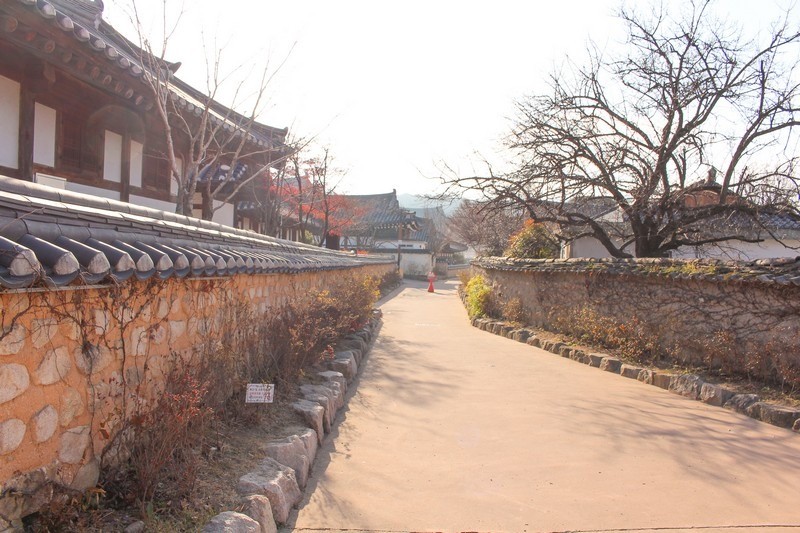 Gyochon Traditional Village (교촌한옥마을), Gyeongju, Korea
Gyochon Traditional Village (교촌한옥마을), Gyeongju, Korea
4. What Outdoor Activities and Natural Attractions Does Gyeongju Tourism Offer?
Gyeongju tourism extends to outdoor activities and natural attractions like hiking in Gyeongju National Park (Namsan Mountain) and relaxing at Bomun Lake. These destinations provide opportunities for recreation and appreciation of natural beauty. SIXT.VN offers convenient transportation options to these sites, ensuring a seamless and enjoyable experience.
4.1 What can visitors expect when hiking in Gyeongju National Park (Namsan Mountain)?
Hiking in Gyeongju National Park, particularly Namsan Mountain, offers a unique blend of natural beauty and historical discovery. The mountain is dotted with over 100 temples and 80 stone Buddha statues, creating an open-air museum experience. Trails range in difficulty, with some steep sections, but the rewards include stunning views and hidden relics. Visitors should obtain a map from the Tourist Information Center to navigate the trails and discover the mountain’s treasures.
4.2 What recreational activities are available at Bomun Lake?
Bomun Lake is a scenic reservoir surrounded by parks, gardens, and walking paths, providing a variety of recreational activities. Visitors can enjoy leisurely strolls along the lakefront, rent bicycles, or take a boat ride. The Bomun Tourist Complex also features hotels, restaurants, and amusement facilities. The lake offers a tranquil setting for relaxation and recreation, making it a popular destination for tourists and locals alike.
4.3 Are there any gardens or parks in Gyeongju that are worth visiting?
Gyeongju boasts several beautiful gardens and parks that are worth visiting. The Gyeongju Expo Park features themed gardens, cultural exhibits, and the iconic Gyeongju Tower. During the summer, the park is filled with roses, creating a stunning display. Other notable gardens include the gardens around Bulguksa Temple and the serene landscapes of Wolji Pond. These green spaces offer peaceful retreats and opportunities to appreciate nature.
4.4 What are the best times of the year to visit Gyeongju for outdoor activities?
The best times of the year to visit Gyeongju for outdoor activities are spring and fall. In the spring, cherry blossoms blanket the city, creating picturesque landscapes and a festive atmosphere. The weather is mild and pleasant, ideal for hiking and exploring historical sites. Fall offers cool temperatures and vibrant foliage, making it a great time for hiking in Namsan Mountain and enjoying the scenery around Bomun Lake.
4.5 Are there any beaches near Gyeongju that tourists can visit?
While Gyeongju is not directly on the coast, it is within driving distance of several beaches. The eastern coastline of Korea, near Pohang, offers beaches such as Yeongildae Beach and Chilpo Beach. These beaches provide opportunities for swimming, sunbathing, and enjoying fresh seafood. A day trip to the coast can be a refreshing addition to a Gyeongju itinerary.
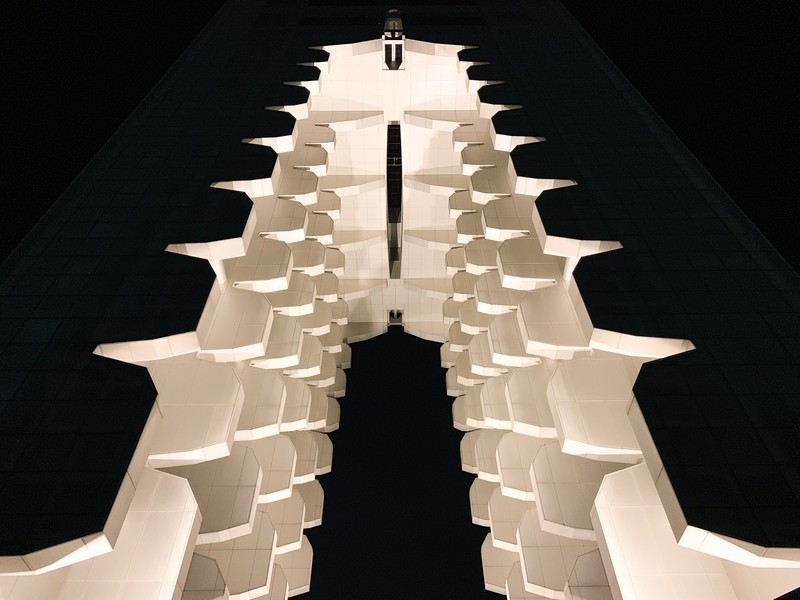 Bomun Complex, Gyeongju, Korea
Bomun Complex, Gyeongju, Korea
5. What Family-Friendly Attractions and Activities are Available for Gyeongju Tourism?
For Gyeongju tourism, family-friendly attractions include Gyeongju World Amusement Park and exploring the Daereungwon Tomb Complex. These destinations offer entertainment and educational experiences for all ages. SIXT.VN provides family-friendly travel solutions, ensuring a comfortable and enjoyable trip for everyone.
5.1 What can families expect at Gyeongju World Amusement Park?
Gyeongju World Amusement Park is the largest theme park in southern Korea, offering a variety of rides and attractions for all ages. The park is divided into several zones, including the X-Zone for thrill-seekers and the Wizard Garden for younger children. Families can enjoy roller coasters, water rides, and seasonal events. The park also features a sledding zone in the winter and California Beach water park in the summer. Gyeongju World provides a fun and exciting day out for the whole family.
5.2 How can the Daereungwon Tomb Complex be an engaging experience for children?
The Daereungwon Tomb Complex can be an engaging experience for children by offering a mix of history and outdoor exploration. The large grassy mounds are intriguing to explore, and the Cheonmachong tomb allows visitors to see artifacts discovered inside. Parents can use the opportunity to teach children about Korean history and the Silla Dynasty. The complex is also a great place for a family walk or picnic.
5.3 Are there any interactive museums or educational centers in Gyeongju for kids?
Gyeongju offers several interactive museums and educational centers that are great for kids. The Gyeongju National Museum has exhibits on Korean history and culture, with some interactive displays. The Gyeongju Arts Center hosts performances and workshops for children. The Natural History Museum provides educational exhibits on the region’s flora and fauna. These centers offer opportunities for learning and hands-on experiences.
5.4 What kid-friendly dining options are available in Gyeongju?
Gyeongju offers a variety of kid-friendly dining options, including restaurants serving Korean and international cuisine. Many restaurants offer dishes that appeal to children, such as bulgogi (marinated beef), bibimbap (mixed rice), and noodles. Fast food chains are also available. Families can also enjoy snacks and treats such as Gyeongju Bread and ice cream.
5.5 Are there any family-friendly accommodations in Gyeongju?
Gyeongju offers a range of family-friendly accommodations, including hotels, resorts, and traditional Hanok houses. Many hotels offer family suites and amenities such as swimming pools and kids’ clubs. Hanok houses provide a unique cultural experience, with traditional rooms and heated floors. Families can find accommodations that suit their needs and budget.
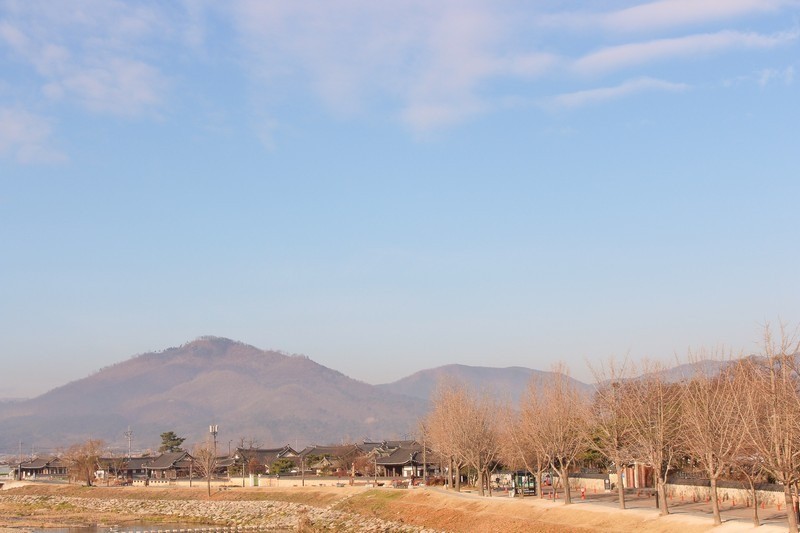 Gyeongju, Korea
Gyeongju, Korea
6. What are the Best Transportation Options for Exploring Gyeongju Tourism?
The best transportation options for exploring Gyeongju tourism include the KTX high-speed train, local buses, taxis, and rental bikes. SIXT.VN offers convenient airport transfers, car rentals, and transportation booking services to ensure smooth and efficient travel around Gyeongju.
6.1 How can tourists get from Seoul or Busan to Gyeongju?
Tourists can travel from Seoul to Gyeongju by KTX high-speed train or express bus. The KTX is the fastest option, with direct trains from Seoul Station taking about two to two and a half hours. Express buses take around three and a half hours. From Busan, tourists can take the KTX, a slower train, or a bus from Nopo Bus Terminal. The KTX from Busan takes about half an hour.
6.2 What is the T-Money card, and how can it be used in Gyeongju?
The T-Money card is a rechargeable transit card that can be used on buses and subways in Gyeongju and other cities in Korea. It offers a convenient and cost-effective way to pay for public transportation. Tourists can purchase and recharge T-Money cards at convenience stores and subway stations. Using a T-Money card can save time and money compared to buying individual tickets.
6.3 Is there a Gyeongju City Tour Bus, and what are its routes?
Gyeongju has its own city tour bus that takes tourists to the must-see spots. The bus follows a fixed route with stops at major attractions, making it a convenient way to see the city. Tourists can purchase a day pass and hop on and off at their leisure. The tour bus provides commentary in multiple languages, offering information about the sites.
6.4 Are taxis readily available in Gyeongju, and what are the approximate fares?
Taxis are readily available in Gyeongju and can be hailed on the street or found at taxi stands. They offer a convenient way to get around, especially for destinations not easily accessible by bus. Fares are metered, with surcharges for late-night rides. A taxi ride from the KTX station to the city center costs approximately W15,000.
6.5 Is renting a bike a good option for getting around Gyeongju, and where can bikes be rented?
Renting a bike is a great option for getting around Gyeongju, especially for exploring the historical sites in the city center. Numerous bike rental shops and kiosks are located near the express bus terminal and other tourist areas. Bikes can be rented by the day or for a few hours. Cycling allows visitors to enjoy the scenery and easily access many of the attractions.
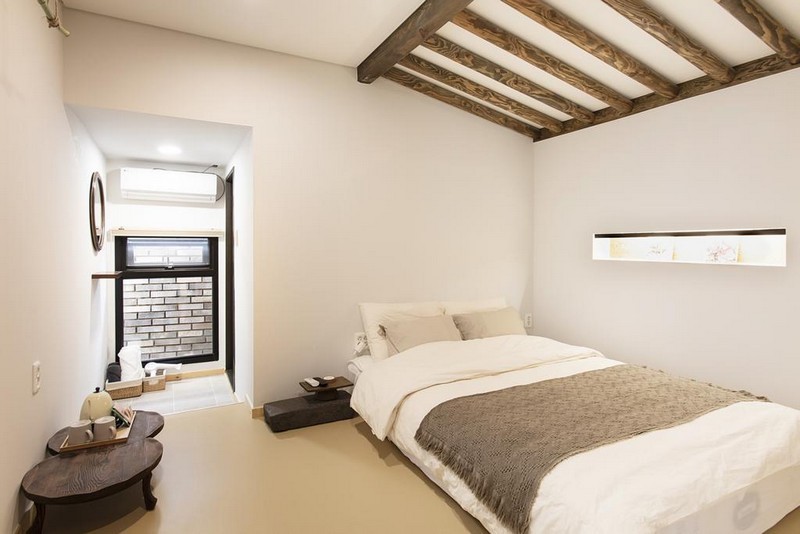 Hyuhyudang, Gyeongju, Korea
Hyuhyudang, Gyeongju, Korea
7. What Accommodation Options are Recommended for Gyeongju Tourism?
Recommended accommodation options for Gyeongju tourism range from traditional Hanok stays to modern hotels, including Hyuhyudang and Gyeongju Happy Village Syeobul. These accommodations offer unique experiences and comfortable stays. SIXT.VN provides a variety of booking options to suit your preferences and budget.
7.1 What is a Hanok stay, and why is it recommended in Gyeongju?
A Hanok stay is an experience in a traditional Korean house, offering a unique cultural immersion. Hanoks feature distinctive architecture, with wooden frames, tiled roofs, and heated floors. Staying in a Hanok in Gyeongju allows visitors to experience traditional Korean hospitality and lifestyle. Many Hanoks are located in historic villages, enhancing the charm and authenticity of the stay.
7.2 Can you describe Hyuhyudang and its unique features?
Hyuhyudang is a beautiful Hanok stay near Gyeongju’s historical sites. The rooms are decorated with stones and wooden accents, creating a chic and cozy atmosphere. Unlike some traditional Hanoks, Hyuhyudang features beds in the rooms for added comfort. The guesthouse offers a blend of traditional charm and modern amenities, making it a popular choice for tourists.
7.3 What can guests expect at Gyeongju Happy Village Syeobul?
Gyeongju Happy Village Syeobul is a traditional Hanok house built in 2015, offering modern comforts with a traditional touch. Each room has a private bathroom and heated floors, providing a cozy stay in both winter and summer. The family that owns the house is known for being friendly and helpful, enhancing the guest experience. Staying at Gyeongju Happy Village Syeobul provides a warm and welcoming atmosphere.
7.4 Are there any modern hotels in Gyeongju that offer good amenities?
Gyeongju offers several modern hotels that provide excellent amenities for tourists. These hotels feature comfortable rooms, on-site restaurants, fitness centers, and swimming pools. Many hotels are located near major attractions and offer convenient transportation options. Modern hotels in Gyeongju cater to international travelers with services such as English-speaking staff and currency exchange.
7.5 What are some budget-friendly accommodation options in Gyeongju?
Gyeongju has a range of budget-friendly accommodation options, including guesthouses, hostels, and budget hotels. These accommodations offer basic amenities at affordable prices. Many guesthouses provide a communal kitchen and lounge area, allowing guests to socialize and save money on food. Budget-friendly options are ideal for backpackers and travelers on a tight budget.
8. What Local Cuisine Should Tourists Try During Gyeongju Tourism?
During Gyeongju tourism, tourists should try Gyeongju Bread and Beopju, representing the city’s unique culinary offerings. These local specialties provide a taste of Gyeongju’s cultural heritage. SIXT.VN can recommend local restaurants and food tours to enhance your gastronomic experience.
8.1 Can you elaborate on Gyeongju Bread and its origins?
Gyeongju Bread, also known as Hwangnam Bread, is a small pastry filled with sweet red bean paste. It is distinguished by the chrysanthemum imprinted on its top. First baked in 1939 in a bakery in central Gyeongju, it has become a symbol of the city. The Gyeongju government has designated it as an “outstanding regional specialty,” making it a must-try for visitors.
8.2 What is Beopju, and how is it made?
Beopju is a traditional Korean rice wine (cheongju) renowned for its clear and refined taste. It is made by the head house of the Gyerim Choe Clan, who reside in Gyeongju. The recipe dates back to a Joseon official who passed it down through generations. Beopju is made using traditional methods and high-quality ingredients, resulting in a distinctive and flavorful wine.
8.3 Are there any specific restaurants in Gyeongju that are known for their local cuisine?
Gyeongju has many restaurants that are known for serving delicious local cuisine. Some popular options include traditional Korean restaurants that specialize in dishes such as bulgogi, bibimbap, and kimchi jjigae (kimchi stew). There are also restaurants that feature Gyeongju Bread and Beopju, allowing visitors to sample these local specialties. Recommendations from locals or online reviews can help tourists find the best dining experiences.
8.4 What are some other popular Korean dishes that tourists should try in Gyeongju?
In addition to Gyeongju Bread and Beopju, tourists should try other popular Korean dishes in Gyeongju. Bulgogi (marinated beef) is a grilled meat dish that is both savory and sweet. Bibimbap (mixed rice) is a colorful and nutritious dish with vegetables, meat, and a fried egg. Kimchi jjigae (kimchi stew) is a spicy and flavorful stew made with kimchi, tofu, and pork. These dishes offer a diverse taste of Korean cuisine.
8.5 Are there any food tours available in Gyeongju that tourists can join?
Food tours are a great way for tourists to explore the local cuisine in Gyeongju. These tours take visitors to a variety of restaurants and food stalls, allowing them to sample different dishes and learn about Korean food culture. Food tours often include visits to traditional markets and cooking demonstrations. Joining a food tour can enhance the culinary experience and provide a deeper understanding of Gyeongju’s food scene.
9. What are Some Lesser-Known Gems for Gyeongju Tourism That Are Worth Visiting?
Lesser-known gems for Gyeongju tourism include Poseokjeong Pavilion Site and Oreung Royal Tombs, offering unique historical and cultural experiences. These sites provide a more intimate glimpse into Gyeongju’s past. SIXT.VN can arrange transportation and guided tours to these hidden treasures, making your visit even more rewarding.
9.1 What is the significance of the Poseokjeong Pavilion Site?
The Poseokjeong Pavilion Site is a historical garden from the Silla Kingdom, known for its unique water system. The site features a stone channel where water flowed, and courtiers would sit along the channel, composing poetry and enjoying wine. This was a place for royal gatherings and artistic expression. Today, the site offers a serene and peaceful atmosphere, allowing visitors to imagine the elegant gatherings of the past.
9.2 What can tourists see at the Oreung Royal Tombs?
The Oreung Royal Tombs are a cluster of five royal tombs believed to belong to early Silla rulers. The tombs are located in a scenic area with grassy mounds and trees. While the identities of those buried in the tombs are not definitively known, the site is historically significant as a representation of early Silla royalty. The tombs offer a quiet and contemplative experience for visitors interested in history.
9.3 Are there any hidden temples or Buddhist sites in Gyeongju?
Gyeongju has several hidden temples and Buddhist sites that are worth exploring. These sites are often located in secluded areas and offer a more peaceful and intimate experience than the more famous temples. Some lesser-known temples include Girimsa Temple and Golgulsa Temple, known for its Sunmudo martial arts. These sites provide opportunities for meditation and reflection.
9.4 What are some scenic viewpoints in Gyeongju that are off the beaten path?
Gyeongju offers several scenic viewpoints that are off the beaten path. These viewpoints provide stunning vistas of the city, mountains, and coastline. Some lesser-known viewpoints include those along the hiking trails in Namsan Mountain and the hills surrounding Bomun Lake. These spots offer a chance to escape the crowds and enjoy the natural beauty of Gyeongju.
9.5 Are there any local markets or craft shops that tourists should visit?
Visiting local markets and craft shops is a great way to experience the local culture in Gyeongju. The Gyeongju Jungang Market is a traditional market where visitors can find a variety of goods, including food, clothing, and crafts. There are also craft shops that sell traditional Korean pottery, textiles, and artwork. These markets and shops offer opportunities to purchase unique souvenirs and support local artisans.
10. What Travel Tips and Advice Can Help Maximize Gyeongju Tourism?
To maximize Gyeongju tourism, plan your visit around the shoulder seasons, utilize public transport, and book accommodations in advance. Also, respect cultural norms and try local cuisine. SIXT.VN provides tailored travel solutions to make your trip seamless and memorable.
10.1 What is the best time of year to visit Gyeongju to avoid crowds and enjoy pleasant weather?
The best time to visit Gyeongju to avoid crowds and enjoy pleasant weather is during the shoulder seasons, which are spring (April-May) and fall (September-October). During these months, the weather is mild and comfortable, and the crowds are smaller than in the peak summer and winter months. Spring offers the added bonus of cherry blossoms, while fall features vibrant foliage.
10.2 How can tourists save money on transportation and entrance fees in Gyeongju?
Tourists can save money on transportation and entrance fees in Gyeongju by utilizing public transportation, such as buses and the T-Money card. Many attractions offer discounts for students, seniors, and groups. Purchasing a Gyeongju City Tour Bus pass can also be cost-effective. Additionally, some attractions offer free admission on certain days or during certain hours.
10.3 What are some essential items to pack for a trip to Gyeongju?
Essential items to pack for a trip to Gyeongju include comfortable walking shoes, as you will be doing a lot of walking and hiking. Sunscreen, a hat, and sunglasses are important for protecting yourself from the sun. A portable charger for your electronic devices is also useful. Depending on the season, pack appropriate clothing, such as light layers for spring and fall and warm clothing for winter.
10.4 What cultural etiquette should tourists be aware of when visiting temples and historical sites in Gyeongju?
Tourists should be aware of certain cultural etiquette when visiting temples and historical sites in Gyeongju. Dress respectfully, avoiding shorts and sleeveless shirts. Remove your shoes before entering temple buildings. Speak quietly and avoid loud conversations. Do not take photos in restricted areas. Show respect for monks and other religious figures.
10.5 Where can tourists find reliable information about Gyeongju’s attractions, events, and transportation?
Tourists can find reliable information about Gyeongju’s attractions, events, and transportation at the Tourist Information Center in the city center. The center provides maps, brochures, and information in multiple languages. The official Gyeongju tourism website is also a valuable resource. Online travel forums and blogs can provide up-to-date information and tips from other travelers. SIXT.VN offers additional support and resources to ensure a smooth and well-informed trip.
In conclusion, Gyeongju tourism offers a blend of historical sites, cultural experiences, and natural beauty, promising an unforgettable journey. With SIXT.VN, you can effortlessly explore this remarkable city, enjoying convenient transportation, comfortable accommodations, and tailored itineraries. Let us enhance your travel experience and create lasting memories in Gyeongju. Contact us at Address: 260 Cau Giay, Hanoi, Vietnam, Hotline/Whatsapp: +84 986 244 358, or visit our website at SIXT.VN to start planning your adventure today.



